Click to view our Accessibility Statement or contact us with accessibility-related questions






PRODUCTS YOU MAY LIKE
Trending Posts in Audiophile
AntonetteCBak
Tips for Setting Up a Trading Desk with a Laptop
Creating an efficient and organized trading desk with just a Best laptops for trading requires a strategic approach to maximize productivity and trading success. Whether you’re a beginner or a seasoned trader, having the right setup ensures seamless execution of trades, minimizes errors, and keeps you focused. Below are essential tips to set up a professional trading desk using a laptop. Invest in a high-performance laptop tailored to trading needs. Opt for a model with a fast processor (e.g., Intel i7 or AMD Ryzen 7), at least 16GB of RAM, and a solid-state drive (SSD) for quick data access. Ensure the laptop has multiple ports for connecting peripherals and a high-resolution display for crisp chart visibility. Trading often involves monitoring multiple charts, news feeds, and trading platforms simultaneously. Connect your laptop to external monitors using HDMI or USB-C ports to expand your workspace. Dual or triple monitor setups allow for better multitasking and a...
Nov 21, 2024

abhinavkumar
Company Information in Dubai
Get comprehensive company information in Dubai, including registration requirements, licensing options, and compliance guidelines. Whether you’re exploring free zones, mainland, or offshore setups, our expert resources provide insights to help you make informed business decisions. Navigate Dubai’s business landscape with clarity, from legal requirements to operational support for a successful establishment. For more details:- https://leelainternational.com/
Nov 21, 2024

Leafwise
Show off your carry / bag / case / setup for your Head-Fi gear ✨
As subject, what do y'all carry your gear in for out-and-about/day-to-day and then for travel, if anything other than pockets?
Nov 19, 2024
keegu22
More bass!
I currently have the the HD 6XX, which sound great but, I'm am looking to upgrade the power of the bass as i really enjoy punchy low end EDM music. Any suggestions in the $200-$300 price range would be awesome.
Nov 13, 2024

danielj9
Trying to add Topping LA90D amp to Topping A9D preamp
Any help would be appreciated...I added an amp to my streamer, dac, headphone amp/preamp system and am now not getting any music through the headphone jacks on the preamp - the specifics: Wiim Pro Plus - optical connection to - Topping D50 iii dac - TSR to XLR connection to - Topping A9D headphone amp/preamp (all worked fine as a headphone amp until I tried adding:) - XLR connection to - Topping LA90 D amp. Amp switches are set to bypass, stereo, low gain. In this configuration, I am not getting any music to either my SE or XLR headphone jacks. I made sure I switched the A9D to "preamp" and "xlr" modes. I have no idea what I might be overlooking or missing...any thoughts would be deeply appreciated! Thank you.
Nov 11, 2024

Tremuh
Trying to find new headset
I currently am rocking the beyerdynamic DT 990 Pros and have been for a while now, along with a go xlr! I was trying to see what other headset you guys recommend along with something to replace the xlr? Thank you!
Nov 7, 2024

aiden.miller
Mic not working pc38x
I just got my pc38x in the mail today and the out put is quiet but fine and I'm happy. But the mic will not work when on my Xbox series and I was wondering if this issue can be resolved or if the head set is not compatible with Xbox.
Nov 4, 2024

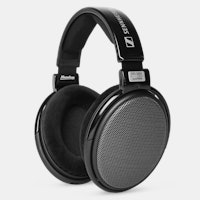

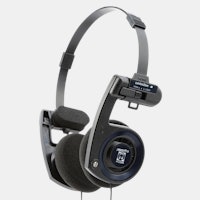
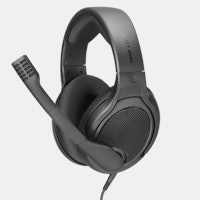
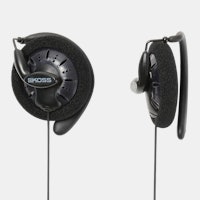

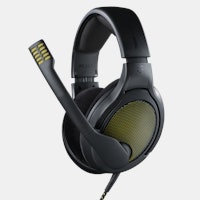
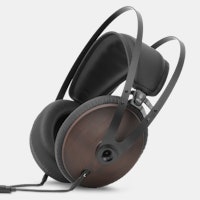
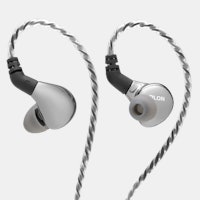

I've heard things through Audioquest (at least they make some things that aren't all nonsense) cables and Cardas cables of varying "quality" levels. Not sure I've actually heard Nordost firsthand, but I'm already at a confirmed 2/2 for underwhelming results for the price asked. Not a good start on the high end cable front.
None of it was anything particularly special. The gear it was connected to was simply good enough that you could claim the cables were a big part of the sound and some people might believe you. I will not claim that there are zero differences between cables. My stance is that cables make a difference, but often a very subtle difference, and none of these differences justify the costs of replacing a cable with an identical length and termination combo from most of these companies. I want to replace my HD6XX and M1060 cables, but only because they're 1/8" plugs on short cables, not because there's magic to be had by paying more than I did for the headphones themselves.
If cables were such a magical and dramatic improvement, we wouldn't be seeing all of the praise we do for new headphones. A HD650 with a $6-700 cable would still manage to sit above the pile of crap Audeze just sold you for $4000 with those awful stock cables. All of these reviews would be relative to an older model with the "mandatory mod" of a new cable if this were really the case. Given that it's not, we're back to my assertion. The changes are fairly minor. How much is that tiny improvement worth to you? Would you not rather just fund better gear at these prices? Sure, $3-400 on those $4000 LCD4s isn't as ridiculous as $400 on a $200 headphone, but $400 will buy you a decent chunk of new music if nothing else, which... you know, is the thing you bought them for in the first place.
I haven’t managed to hear anything as dramatic in any level of cable so far when doing similar tests in headphones. It’s a shorter run, a higher impedance driver, and a lot less power. All of these things make any changes a lot more subtle, if not completely inaudible, depending on the setup.
Couple that with the prices being absolutely ridiculous relative to the price of the actual headphones, and any justification I could have potentially had for experimenting with overpriced cables from brands that bank on buzzwords and flowery stories to push their product is gone.
Without even hearing this specific cable, I can assure you I would not find the change dramatic. I never have, with any cable, unless the one being replaced was actual junk.
I’ll stick to my more than affordable, 99% as good or better cheapo wires in various cables. Music isn’t cheap. I’m not wasting that kind of money on a 0.25% improvement to be perfect when I could be hearing new things with my 99.75% as good as they can be headphones, and still saving money.
That’s also assuming conductivity is the only thing that affects signal transfer, which is not true in any capacity. You run into a lot more changes than resistance per meter specs when changing your connection.
It’s also not going to be 100% identical. It may be hundreds of thousandths of a percent different, but any change in any parameter that affects signal transmission is instantly going to deviate from 100% identical transfer. Two wires made to the same spec aren’t identical. Any deviation is potentially audible. Any potential case for audibility renders these assertions that there is zero change pointless.
Negligible, minute, trace, etc. All of these words could be used to describe the changes in most swaps. I consistently argue that the changes are almost never worth your money, but none of those words mean zero, true zero, where the counterpoint has no case. If you want to claim there’s no benefit, then do that, but don’t make assertions that are actually wrong. Zero and 100% are very absolute things, and using either in this argument is an oversimplification that just ruins your case.
But all of that is assuming anyone cares to actually debate it logically, with that level of absolution being important, rather than insist that their ways are correct and anything to the contrary is wrong. And we’re on the internet, so that assumption is pretty stupid I suppose.
And I called myself stupid for expecting anyone to take absolutes as such, but I guess I should expect that to be taken as an insult. I never said you were stupid. The lols, the bahahas, the little jokes, they all convey this feeling of superiority I find annoying, which is why most of my comments are dry and probably end up sounding more condescending without all the little additions, but I still don’t think you’re stupid here. You’re agreeing with me as to the significance of most changes, while completely disagreeing with me on my main point regarding any potential change, which is more than I can say for most conversations I’ve come across.
tin ear (noun) 1. an insensitivity to melodic, rhythmic, and harmonic variety in music 2. an insensitivity to subtlety or appropriateness in verbal expression
Having tin ears has absolutely nothing to do with the preservation of the 1's and 0's in your audio signal, nor about the bitrate. It's about the creative quality of music itself and subtleties in human speech. Someone who is autistic might be said to have tin ears to interaction. Someone who can't tell the difference between an audio signal that is 99.999% accurate and one that is 99.995% accurate does not have tin ears.
You didn't critically read my last comment at all. You took it completely at face value and used it only as ammunition to further insult me. Unfortunately for you here as well, I've been on the internet for decades and I won't waste my time on that kind of dead end. If you reply to this comment, I won't reply. I won't even read it.
I'll leave you with this. If you had used even an ounce of reading comprehension you would have been able to realize my mention of "1's and 0's" was only part of it. The part to describe that there are differences between the quality of an audio/sound signal, and the quality of the content, the music, that is contained in that signal. Tin ears refers to the content of the signal, not the quality of the signal itself. Only holier than thou audiophile gatekeepers use it the way you did.
Enjoy your bitter life, just don't expect us peasants to stand beneath you to prop up your industry. Luckily and thankfully, the new generation of audiophiles understands that there are substantial quality differences between a $100 beginner headphone amp and a really great quality one in the $400-500 range, but the difference between a $500 amp and a $5,000 amp leaves at least $3,000 left over that went to pure snake oil.